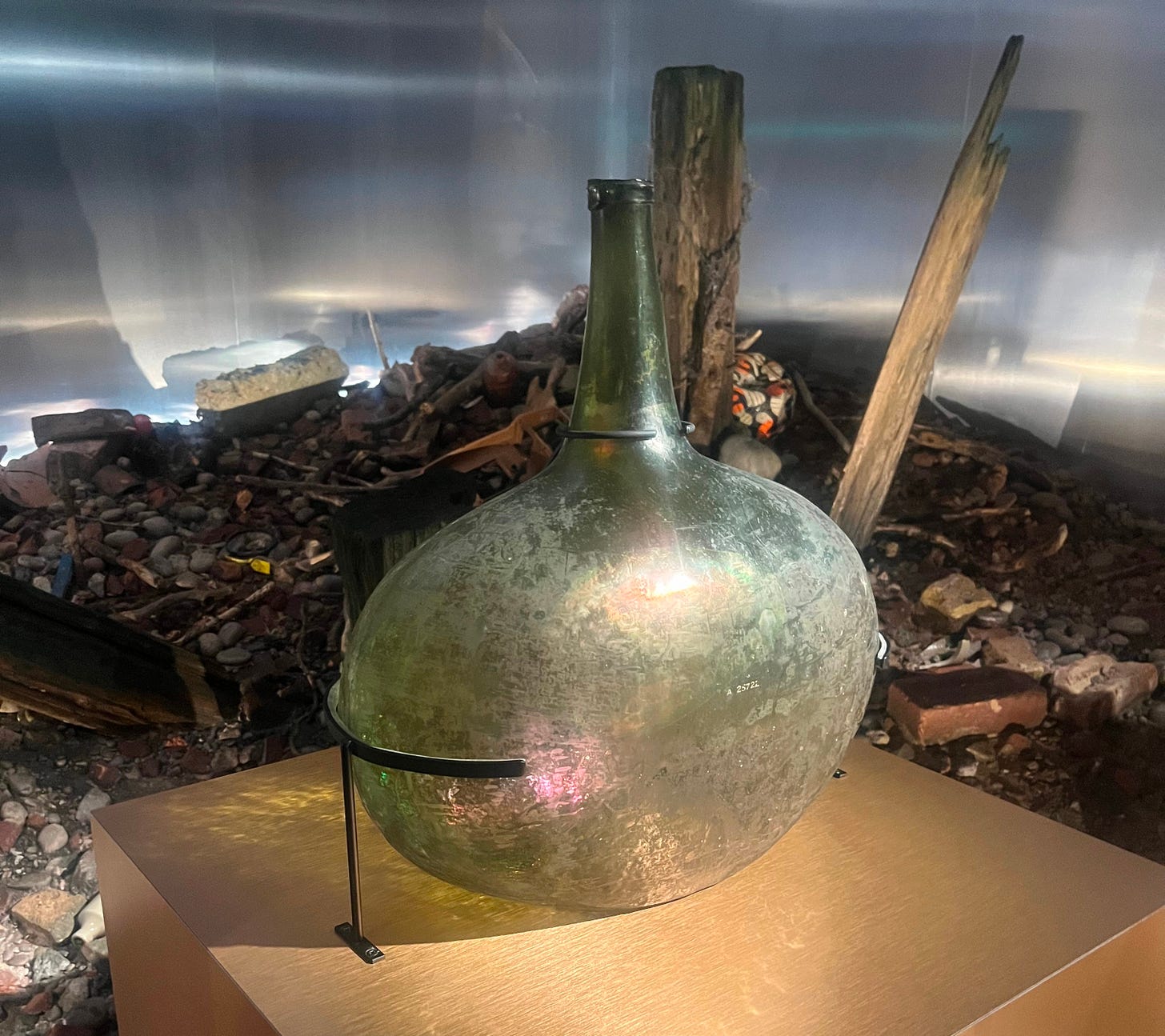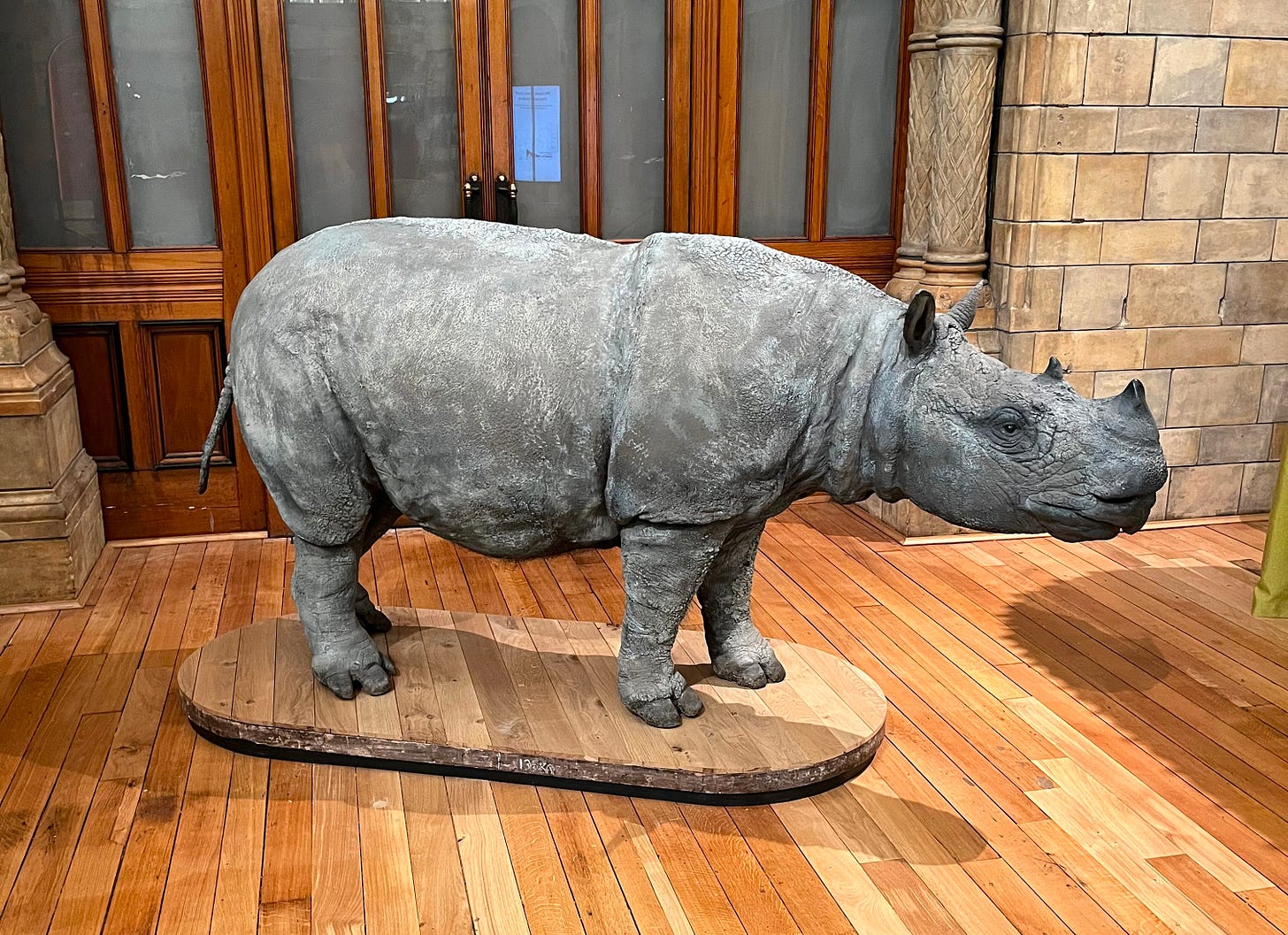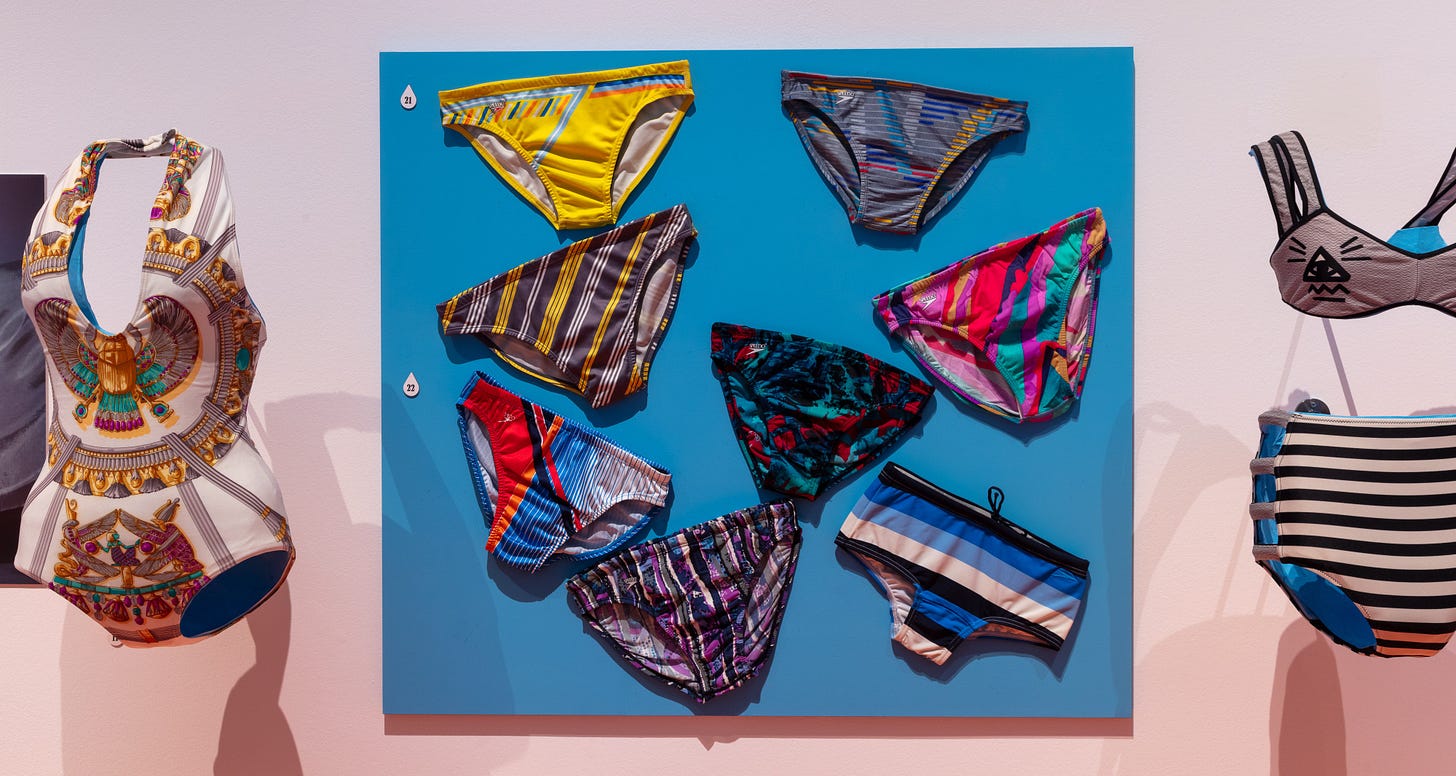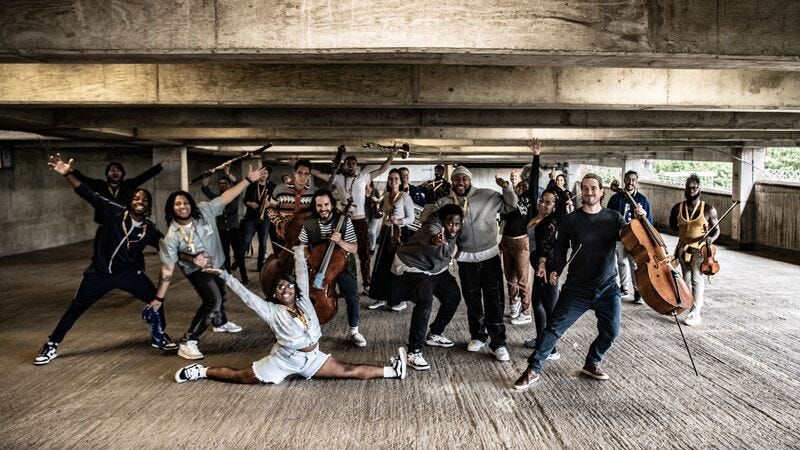Today’s post marks a whole year of The London Culture Edit. On Monday I head to New York, which by coincidence is where I was when I published that first proper post, and reading it back now I realise I need to tighten back up on the stuff I’ve seen, because it was far more concise than anything I’ve written here for the last six months. Note to self.
Thank you, all of you, for being here; I hope you’re enjoying it and finding it helpful in navigating the rich cultural landscape of this amazing city (London, not New York, for clarity).
To celebrate, there’s a discount on both annual and monthly subscriptions for a limited time, so that if you’re not already a full subscriber, you can get access to the whole thing, which is, according to actual readers encountered in the wild, genuinely useful.
As I said in that first post, my ambition for The London Culture Edit is that if you say to your flatmate, or your mate, or your partner, or your reflection in the mirror, “Let’s do something cultural this weekend”, their answer will be “Yes! What was in that woman’s email?”
What I’ve seen
I predict that Secrets of the Thames at the London Museum Docklands will inspire a flood of new applications for a licence to mudlark. Mudlarking, if you’re not sure, is the practice of scouring the shore of the river for treasure, whether that’s an Iron Age shield, a lost Lego or one of the clay pipes that wash up endlessly in tribute to London as a city of enthusiastic smokers.
This show explores finds made by mudlarkers over decades (and occasionally by works on the river, like the bronze Waterloo Helmet, the only example of an Iron Age helmet ever found in the UK, and the only one with horns ever found in Europe) and their relationship with the historians and institutions trying to weave the rich thread of London’s long and complex story (you can keep quite a lot of stuff, but you have to report quite a bit, and you definitely can’t keep everything. Some things are too important).
It’s fascinating, what washes up on these shores to poke out of the mud. Viking battle axes, clothes pins, Mesolithic tools (that’s somewhere in the region of 10,000 years ago), swords of all eras, a 16th/17th century compass (in two parts, found separately, by separate people, searching eight years apart in the same place), ancient shoes, handbags and headpieces, pagan offerings, endless pottery and gorgeous glassware (let’s go back to wide-bottomed bottles! They’re so fun), tiny toy crockery (there’s a frying pan with fish in it), an entire, very beautiful typeface (chucked into the river from Hammersmith Bridge in a fit of pique by a printer who didn’t want his former partner to get hold of it on his death, an act of pettiness that is breathtaking in its audacity and its determination, since it took 170 trips before all of it had been given to the waves)... you get the idea.
There’s also quite an extensive section on the mudlarkers themselves, with more finds, information about how they’re catalogued (a bit confusing, this bit), and some lovely recorded testimonies about why they love it, and what it means to them. It’s really rather moving. As I said, I think quite a lot of people might be inspired. That runs until March 1 next year.
As I expected, Carmen at the Royal Opera House was pretty knockout. Aigul Akhmetshina was fantastic in the leading role, not just in terms of her fabulous singing but also she can actually act, which is always helpful but not always a given in this context.
Her Carmen was complex, contradictory, damaged, playing a role she only half believes herself. Despite her swagger, her discomfort, as she’s endlessly manhandled by the brutish men around her, is palpable, even as she’s using her sexual charisma to manipulate them. It’s hard watching her being pushed around by her lover, Freddie di Tommaso’s jealousy-crazed police officer Don José; I found myself squirming, the physical direction is mostly very good here.
Everyone in this is great, I think, though despite Yaritza Véliz’s glorious, pure voice, I really loathed the characterisation of Micaëla, the young woman sent to bring Don José a message of forgiveness from his elderly mother. She’s already nauseatingly pious; she doesn’t have to be dressed like a child or breathlessly run around like one.
She could perfectly well simply be a prim, uptight young woman in the mould of Don José’s mother, who has raised her - the antithesis of Carmen. She’s in love with José, she’s not a child; I don’t see why she has to wriggle about anxiously like she needs a wee, or bite her nails like she’s 12. The director, Damiano Michieletto, should have thought a bit harder about how real women actually behave. I also think his mother, who haunts proceedings but never sings, ought to have turned her back at the end, considering her hopes for José are entirely centred around virtue, and what he does to Carmen is not that.
Anyway, the setting is a sort of Spanish late-mid-20th century mishmash, though it’s sung in French. The opportunity for tartiness and slovenliness afforded by that broad era’s fashions works well for a story of cigarette girls, idle men, corrupt rural policemen and industrious smugglers, all getting their kicks at the bullfight. It’s a brutal world and the finale is brutal too, really well done (horrible). It’s great. That runs to July 3, on selected dates. Oh, and if you’re not familiar with the way opera is staged, don’t let the run time of 3 hours put you off - the interval is 25 minutes long. Time enough for overpriced drinks and tiny sandwiches in one of the prettiest bars in London (the Floral Hall). Give in, enjoy it.
The new permanent gallery at the Natural History Museum, Fixing Our Broken Planet, is pretty bleak. Ostensibly it focuses on the work that scientists - many from or associated with the NHM - are doing to mitigate some of the ecological nightmares that we have woven for ourselves, but inevitably what stays with you is the many, diverse states of emergency that we have got ourselves and all other living things into.
I think what they’ve done is asked the various different scientists to choose the objects tell these stories most clearly, but that’s not always the best route in. Wrangling those often quite visually dull items into an engaging whole has proven difficult. The most effective parts of it are the films, in which enthusiastic young activists and scientists talk about how much plastic crap we’re finding in the stomachs of crabs, or, more positively, about biodiversity in the Walthamstow Wetlands (if you don’t know these, you should visit).
I’m not absolutely sure who it’s for. Kids will find it a bit dull, adults will certainly find it interesting, but also quite depressing, despite its upbeat attempts to suggest that we’re looking for solutions. The problems just feel too great.
More optimistic, and certainly more enjoyable, is Giuseppe Penone: Thoughts in the Roots, at the Serpentine Gallery. I reviewed it for The Times, which you can read here.
Penone is one of the youngest members of the Italian Arte Povera movement that first emerged in the 60s, using modest and unconventional materials (oh, and bronze, and slightly surprisingly gold and marble, because presumably when it’s naturally occurring it counts as humble?) and has devoted his career to the celebration of the natural world, with its denizens (like trees) considered fellow travellers in a shared universe.
It’s rather lovely, and contemplative; with charcoal wall drawings, sculptures made of leaves and felled trees carved into, layer by layer, to reveal the original young sapling as it was. For me it induced a feeling of wanting to linger, bringing the glorious surroundings of Kensington Gardens into the gallery, and the gallery out into the gardens, with two monumental works placed outside - bronze casts of real trees that look entirely real, one blasted by lightning, the wound highlighted with gold, almost like kintsugi, to show its beauty. Apparently they’re very popular with dogs, whatever that means, but they’re also very popular with human visitors. That runs to September 7.
Also on
I quite want to see the Irish film Four Mothers, which stars James McArdle as a novelist caring for his mother, played by Fionnula Flanagan, whose duties are suddenly quadrupled when three of his friends dump their own elderly mums on him so they can go to a foreign Pride weekend. A sort-of remake of the Italian film Mid-August Lunch (which I haven’t seen), it looks very funny, and also very moving.
I also think that by the time I get back from New York (where it is not particularly warm right now, but my pals have a heated outdoor pool so I will brave it), I will be ready to see Splash! A Century of Swimming and Style at the Design Museum. It looks a hoot, with exhibits from an early 1951 bikini to a Lanvin “beach peignoir” in cotton towelling that looks suspiciously like one of those loo roll holders, and Pamela Anderson’s Baywatch costume, moulded, perturbingly, to her particular form. That runs to August 17.
Peter Mitchell: Nothing Lasts Forever at the Photographers' Gallery looks good too. Mitchell is a hugely important early colour photographer, working since the 1970s, who has devoted much of his time to telling the story of his hometown of Leeds, its people and places, and its demolition and development, with warmth and deep knowledge for over 40 years.
He calls himself 'a man of the pavement', and is still walking the streets of Leeds with his camera today. I love these kind of lifelong photography projects, where a keen eye keeps seeing new things in familiar places. It runs to June 15, and tickets include access to the gallery’s other shows, currently the Deutsche Börse Photography Foundation Prize exhibition and an exhibition and commission by the collective Planetary Portals, combining archival photography and AI.
Theatre-wise, I’m hoping to catch Speed at the Bush, which has the starting strapline of: “a nurse, a delivery driver, and an entrepreneur walk into a speed awareness course…”. It’s written by Mohamed-Zain Dada (he wrote the Olivier Award-nominated Blue Mist, which ran at the Royal Court a couple of years ago) and reunites him with that show’s director Milli Bhatia.
Nikesh Patel plays Abz - the UK’s leading expert on road safety and the most in-demand course facilitator north of the M25. It sounds fun, no? - running (but not too fast) to May 17.
Book now
If you’re a crime fiction fan, you’ll be keen to know about Capital Crime, the crime and thriller festival, at the Leonardo Royal Hotel at St Paul’s from June 13-14. You’ll also likely know who most of these people are - confirmed authors/speakers include: Linwood Barclay; Ruth Ware, whose The Woman in Cabin 10 is currently being adapted by Netflix, with Keira Knightley; Dorothy Koomson; Lisa Jewell; Conn Iggulden; Suk Pannu (creator of the Mrs Sidhu Investigates series; Doctor Who’s Chris Chibnall; Karin Slaughter and Mark Billingham; spy writing royalty Charlotte Philby and Nick Harkaway; Richard Armitage and loads more.
Tickets are sold as passes to either individual days or the whole weekend, here.
I’ve mentioned this before, but Southbank Centre's all-new multi-artform festival, Multitudes, which “redefines the orchestral experience with an innovative, bold programme that pushes the boundaries of how classical music is presented in the 21st century”, starts on April 23, running to May 3.
There’ll be orchestral music across the Southbank Centre site, including an opening night of circus performance (not my idea of fun but I have a weird allergy to circus), a classical takeover of the Hayward Gallery, club nights and innovative collaborations.
Particularly interesting will be Vexations, on April 24, with pianist Igor Levit playing Eric Satie’s challenging, madness-inducing work, one of classical music’s most simple, yet arduous and demanding. The one-page score includes an instruction to repeat it 840 times, which translates to between 16 and 20 hours of continuous playing. There’ll be an introduction at 10am that day from the queen of durational performance, Marina Abramović.
There’s also the premiere of the artist William Kentridge’s film Oh! To Believe in Another World, with the Shostakovich symphony that inspired it, played by the Philharmonia Orchestra conducted by Marin Alsop. Using collage, puppets and masked actors, Kentridge creates a dream-like ‘Soviet museum’ to accompany the symphony, featuring a cast of characters including Lenin, Stalin and Shostakovich himself.
On Saturday April 26, the Multi-Story Orchestra will perform a response to Mickalene Thomas’s show at the Hayward Gallery, All About Love, called Singing About Love. There’s also an orchestral evening from pioneering musicians who are leading the way in British grime and hip hop, an immersive musical journey through London, a performance of Carnival of the Animals from the Aurora Orchestra (my fave), and a specially designed, theatrical concert of Mahler 8 put together by director Tom Morris. I think the whole thing could be super exciting, sort of a bit like the early days of the Manchester Festival, but focused around music.
Listen to the whole of the second season of The London Theatre Review podcast here, or wherever you get your podcasts, for our views on everything from Retrograde to The Devil Wears Prada (not the same. Not the same at all). New season starts on May 11
Oh and also Giant, which I loved at the Royal Court, and which stars John Lithgow as Roald Dahl digging his heels in about his antisemitism, starts previews in the West End next week at the Harold Pinter. It runs to August 2, book now, it’ll be really hard to get a ticket pretty soon.
Further ahead
Iggy Pop is playing Ally Pally on May 28. I’ve never seen him live (though I do love his radio show on Six Music, always surprising) and I expect it has to be seen to be believed. Tickets still available, mildly pricy but hardly Tay Tay levels.
I wrote about Onegin at the Royal Opera House (the ballet, not the opera, I don’t think I’ve seen the opera) a while back, it was absolutely incredible. It’s coming back, from May 29 to June 12, so do book now, there are currently quite a few cheaper tickets available.
You may or may not know the weird, disquieting work of the English painter Edward Burra, but I love it, absolutely everyone looks moderately disreputable. There was a brilliant show of his work at Pallant House Gallery in Cheltenham (I seem also to remember a very good baked camembert at their cafe, but this is an unhelpful digression) quite a number of years ago, and now Tate Britain are finally doing one. Oddly enough, he’s best known for his depictions of the urban underworld, Black culture and the 1930s Harlem scene, which no white man in his right mind would make a career out of now, but he was there at the height of its cultural renaissance, and then painted from memory back at his parents’ house in leafy Sussex.
His work is, in what I can only assume is a kind of experiment on the part of Tate, being shown alongside (in dual but separate shows) the work of the visionary occultist Surrealist Ithell Colquhoun. I’m less bothered about her, but perhaps she will wow me in person. Anyway, they run from June 13 to October 19 and the ticket covers both.
I’m taking the next couple of weeks off for a holiday, but will be back in the saddle after that. As ever, if you’re enjoying the London Culture Edit please do click the heart at the bottom, or share it with your friends. Thank you.










Well done for a year’ coverage of the London arts scene.
PS Pallant House is in Chichester not Cheltenham